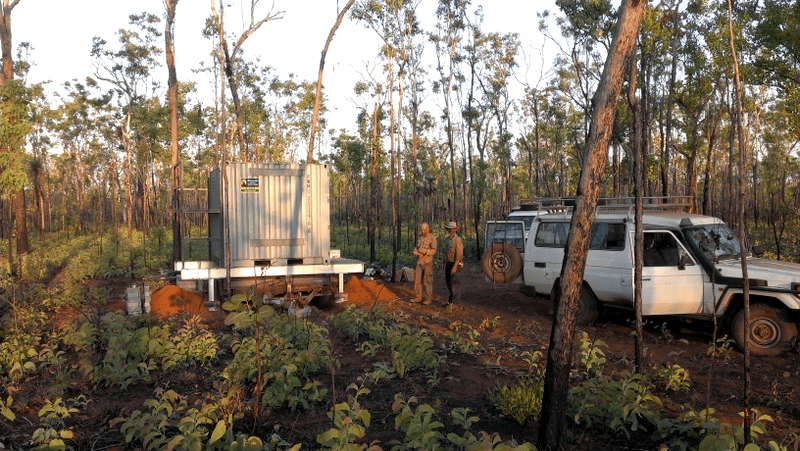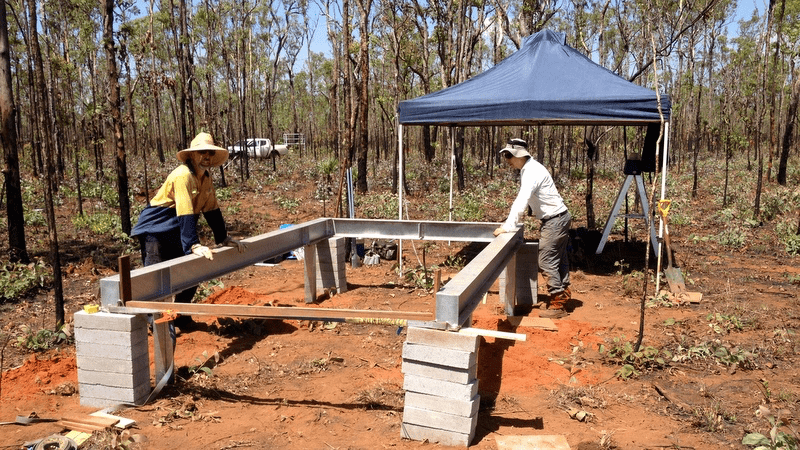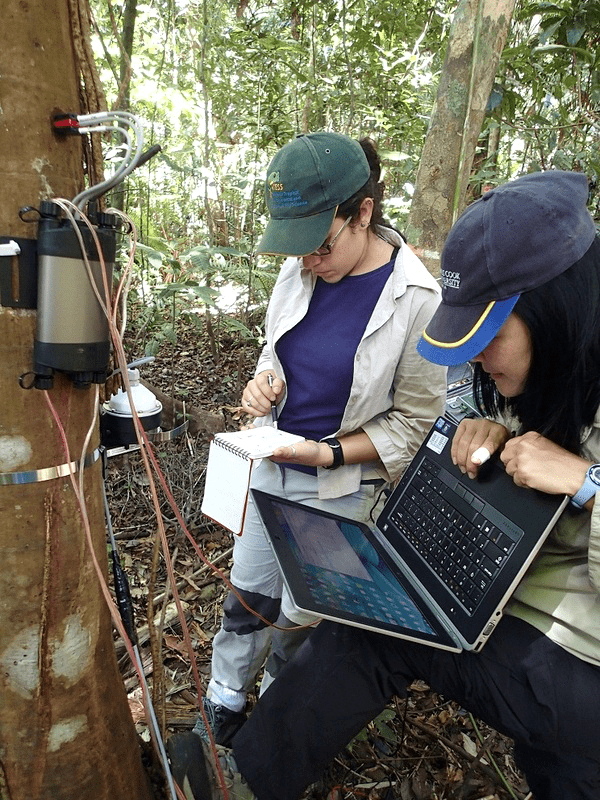Knowing the amount of biomass contained in Australia’s northern ecosystems allows us to estimate current carbon stocks and more accurately describe how this region contributes to the carbon cycle.
Until now, estimations of biomass and carbon in our tropical rainforests have been made based on very small sample areas. At the Robson Creek node of the TERN FNQ Rainforest SuperSite, one of ten sites in the ASN network, an intensively studied 25 ha rainforest plot is allowing researchers to make more accurate estimates of above ground biomass and carbon in Australia’s rainforests. Biomass data was obtained from a survey of the 23 426 plant stems ranging from 10 to 153 cm diameter across 209 species contained in the plot. This stem data is complemented by biomass estimates from the smaller stems and woody debris on the forest floor to gain a complete picture of biomass in the ecosystem. To measure carbon inputs and outputs from the surrounding atmosphere, TERN has constructed a 40 m tall flux tower adjacent to the 25 ha Robson Creek plot. Current estimates of above ground biomass and carbon are in publication.
Such papers will encourage more researchers to visit the site for their investigations. Researchers from a number of institutions, visiting botanists, and local school groups have already utilised Robson Creek’s infrastructure in the past few months. Recently a group from the University of Tokyo used a terrestrial laser scanner to compare direct and remote estimations of forest biomass.
At the Cape Tribulation node of the FNQ Rainforest SuperSite (Daintree Rainforest Observatory), federally funded work on new researcher accommodation has advanced quickly and the site will be completed by May. Installation of instrumentation for JCU Associate Professor Susan Laurance’s ARC funded Daintree drought experiment is proceeding rapidly. Sap flow and phloem sensors have been installed and six soil pits with sensors that measure soil moisture and water potential have been constructed.
Encouraged by the collaborative research that the FNQ Rainforest SuperSite is facilitating, construction of a flux tower at the newly instituted Litchfield Savanna SuperSite is back on track after the interruption by Tropical Cyclone Alessia in November 2013. The OzFlux tower is expected to be operational by June.
New datasets:
Data from the two nodes of the FNQ Rainforest Supersite, Robson Creek and Cape Tribulation, can be accessed via TERN’s Data Discovery Portal. New fruit phenology and bird capture data from the Robson Creek SuperSite was added in February.
Recent publications:
Bradford, M.G., Metcalfe, D.J., Ford, A.J., Liddell, M.J., et al. (2014) Floristics, stand structure and above ground biomass of a 25 ha rainforest plot in the Wet Tropics of Australia. Journal of Tropical Forest Science. Accepted for publication.
Rosell, J.A., Gleason, S., Mendez-Alonzo, R., Chang, Y., Westoby, M. (2014). Bark functional ecology: evidence for tradeoffs, functional coordination, and environment producing bark diversity. New Phytologist, 201(2): 486-497. Available online.
Upcoming events:
Prof. Owen Atkins (ANU) wet season campaign on leaf level plant physiology for eMAST/ASN commences 17th March at the FNQ Rainforest SuperSite.

Once the equipment shed at the Litchfield Savanna Supersite was constructed (above) construction of the footings for the OzFlux tower was quickly underway (photos courtesy of Lindsay Hutley). The OzFlux tower is expected to be operational by June.

Photo above right: Dr Yoko Ishida and her field assistant setting up sap flow sensors for JCU Associate Professor Susan Laurance’s ARC funded Daintree drought experiment at the FNQ Rainforest Supersite (photo courtesy of Peter Byrnes)
Published in TERN newsletter March 2014







